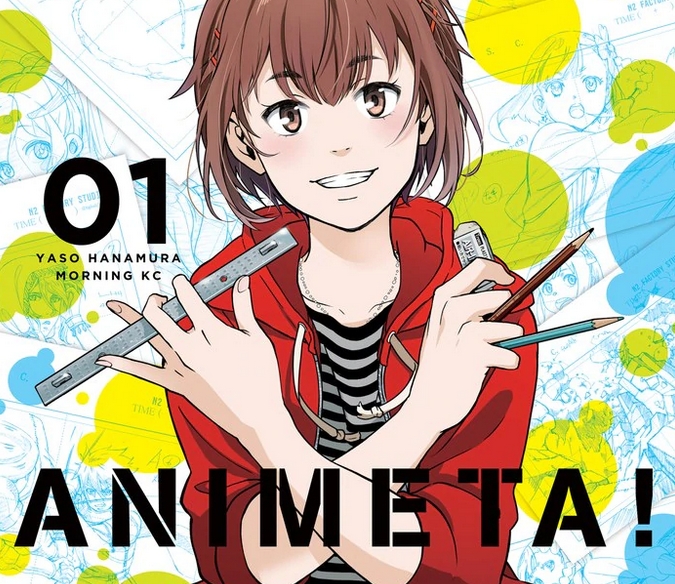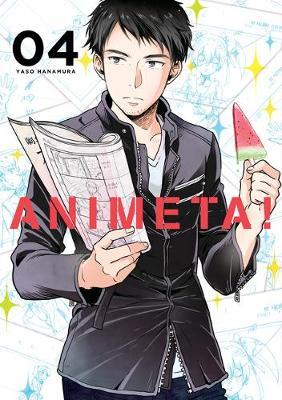Manga: Animeta
April 20, 2022 · 0 comments
By Jonathan Clements.

It’s hard indeed to compete with the sort of granular detail and insight of Shirobako, but Animeta does a fine job from the very first pages, in which cynical staff at an anime company bicker over the poor quality of new hirelings. Facing a bunch of talentless drudges, the go-getting director Kujo muses: “Where are all the idiots who will bet their lives on anime?”
Yaso Hanamura’s manga delves into every conceivable angle of the anime business, but occupies itself in its opening chapters with the brutal politics of luring new staff into a life of anime overtime. Debating whether to hire a 19-year-old girl or a 25-year-old woman as a new animator, the company lech favours the younger, but so does the smart anime director, because in a few years’ time, when she realises anime is a mug’s game, the teenager will still have time to retrain and find a proper career.
In starting at the very beginning, with our rookie heroine being turned down for a job, Hanamura makes it clear that Animeta is really going to investigate every angle, and that includes the one that will be so crucial to many of its readers – actually getting a job in an anime company. Inspired by her viewing of Royal Girl Pannacotta, Miyuki Sanada wants to be an animator, but she only makes it through to the interview stage because of a chance comment on her resumé. Igarashi the old soak is unimpressed with her animation skills, noting she has never studied technical drawing, but Kujo the starry-eyed director sees her raw potential in the way her artist’s eye can pick out the moving parts of reality.

Animeta will be a wake-up call to anyone who wants to be an animator just because they like cartoons, or because their student work got a few hits on YouTube – both attitudes soon slapped down by old hands in the studio. In making his heroine literally clueless, thrown in at the deep end because of Kujo’s patronage, Hanamura creates a perfect point-of-view character to ask all the difficult questions, like “What exactly is clean-up?” Miyuki also has a frenemy in the studio in the form of Maria Date, a girl who has only been hired because her mother is a famous manga artist, to whom, if anything the animators are even harsher. In criticising her slapdash attitude towards key frames, we get to understand why an error the width of a mere pencil lead can leave inbetweeners with impossible parameters to fill in the animation between the main images.
Animeta is a fascinating worm’s-eye view of the animation business in Japan, happy to spend a chapter literally focussing on the way to draw a line, drawing the reader into the physicality of working in an anime company. Hanamura covers everything from finger cramps to the studio canteen, the differing ranks of various workgroups, all in the process of assembling a cartoon from the first pencil to paper to the final broadcast product. It is no surprise to me that the book has become mandatory reading at Studio Trigger, recommended to new staff as a glimpse of the horrors that lie ahead.
Jonathan Clements is the author of Anime: A History. Yaso Hanamura’s Animeta is published by J-Novel Club and available in the UK from Anime Limited.
Leave a Reply